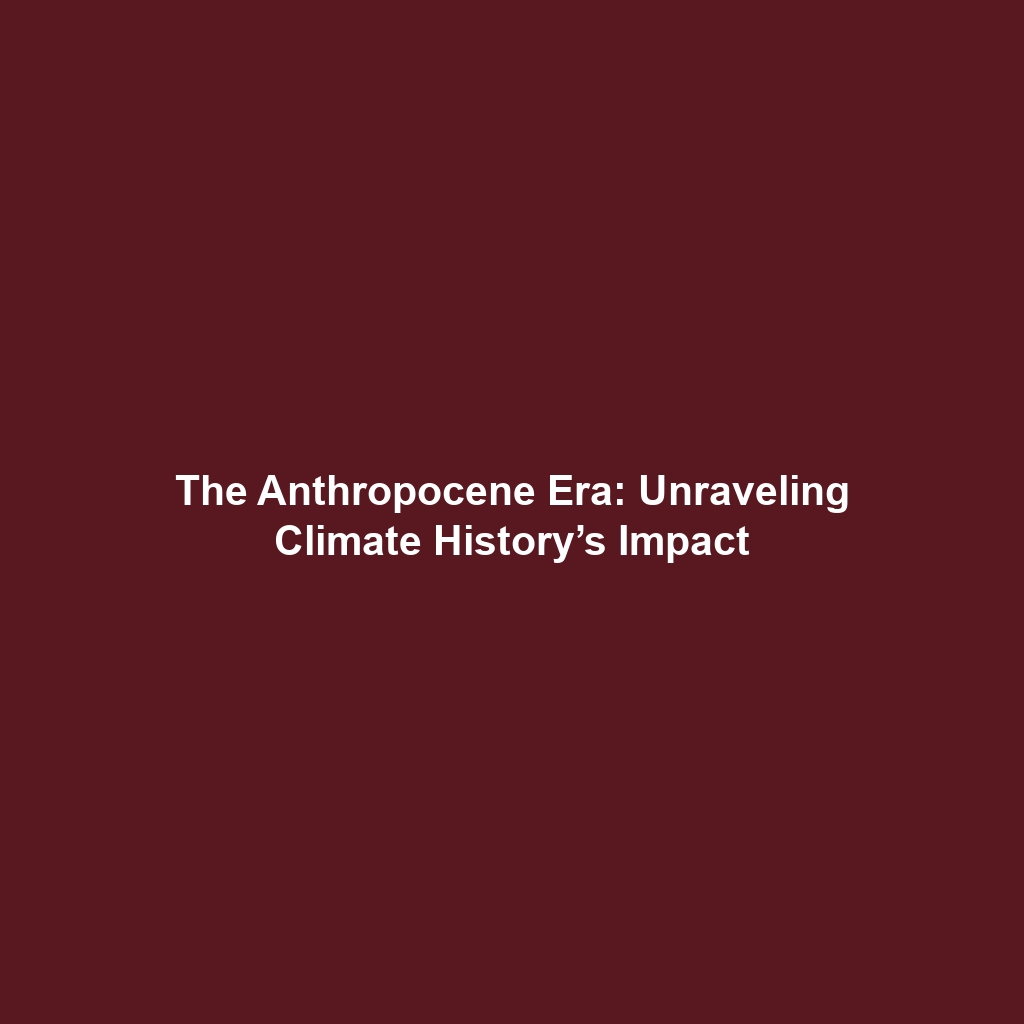The Ice Ages and the Pleistocene Epoch: A Climate History Overview
The Ice Ages, spanning the Pleistocene Epoch of the past 2.6 million years, represent one of the most significant periods in Climate History. During this epoch, Earth experienced dramatic shifts between glacial and interglacial periods, altering landscapes and ecosystems. These cycles have not only reshaped our planet’s geography but also influenced species evolution and human history. Understanding these phenomena is crucial for comprehending current climate change dynamics.
Key Concepts: Understanding the Ice Ages
The term “Ice Ages” refers to the periods within the Pleistocene Epoch characterized by extensive glacial coverage. Key concepts include:
- Glacial and Interglacial Cycles: Glacial periods are times when large ice sheets cover vast areas, while interglacial periods are warmer phases where ice retreats.
- Climate Forcing Mechanisms: Factors such as volcanic eruptions, solar radiation changes, and Earth’s orbital variations influence climate shifts.
- Species Adaptations: Extreme conditions during these ages spurred evolutionary advancements across various species, including early humans.
Applications and Real-World Uses
The study of The Ice Ages and the Pleistocene Epoch has numerous applications in understanding Climate History:
- Climate Modeling: Insights gained from studying past climates inform predictive models for future climate scenarios.
- Ecology and Conservation: Understanding historical species distributions aids in current conservation strategies.
- Geological Resources: Study of glacial deposits provides data for natural resource exploration.
Current Challenges
Despite its significance, there are notable challenges in studying The Ice Ages within the framework of Climate History:
- Data Limitations: Climate data from previous ages is often incomplete and relies on indirect evidence, complicating analyses.
- Modeling Uncertainties: Predicting future climate scenarios based on past events can have inherent uncertainties due to complex variables.
- Public Perception: Misunderstandings about climate history can lead to challenges in policy-making and public support for climate initiatives.
Future Research and Innovations
Ongoing research is revealing new insights about The Ice Ages and the Pleistocene Epoch:
- Advanced Climate Models: Next-generation climate modeling technologies improve the accuracy of future predictions.
- Genomic Studies: Genetic research on ancient species may reveal how organisms adapted to changing climates.
- Geospatial Technologies: Innovations in remote sensing and geographic information systems (GIS) enhance our ability to map and analyze past climatic changes.
Conclusion
In conclusion, The Ice Ages and the Pleistocene Epoch are pivotal components of Climate History that hold critical insights for understanding our planet’s climate dynamics. The information gleaned from these periods not only deepens our understanding of past climate events but also informs our approaches to contemporary climate challenges. To explore more on related topics, visit our sections on Climate Change or Ecosystems and Biodiversity.

